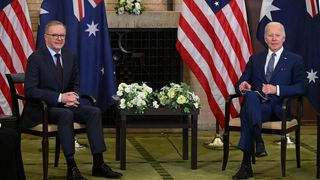In this essay published for Asia Policy by The National Bureau of Asian Research, USSC Research Fellow Dr Peter Lee and the Strategic & Defence Studies Centre (Australian National University) Senior Lecturer in Strategy Andrew Carr argues that Australia’s choices in the US-China rivalry have been significantly shaped by the different role conceptions of the country’s prime ministers, producing outcomes at odds with structural expectations for middle-power behaviour.
MAIN ARGUMENT
Australia’s relations with China and the US are in a state of flux. Relations with Beijing have turned antagonistic, though trade continues apace. Meanwhile, relations with Washington seem infused by intimacy, yet also feature regular bouts of divergence. Three explanations are commonly offered to explain Australia’s evolving relations with both great powers: the changing balance of power, alliance pressure, and national interests. However, none of these sufficiently explain variations in why and how Australia has behaved in recent years. Instead, the different role conceptions of Australia’s three prime ministers between 2013 and 2022—Tony Abbott, Malcolm Turnbull, and Scott Morrison—better explain Australia’s choices. Specifically, a typology of role conceptions based on these leaders’ domains of interest and desire for change shows how they responded differently to similar external pressures and thus demonstrates the decisive impact of leaders in how middle powers respond to great powers. It is still too early to identify Anthony Albanese’s leadership role conception, given his recent election in May 2022, but a domestic role conception is likely.






